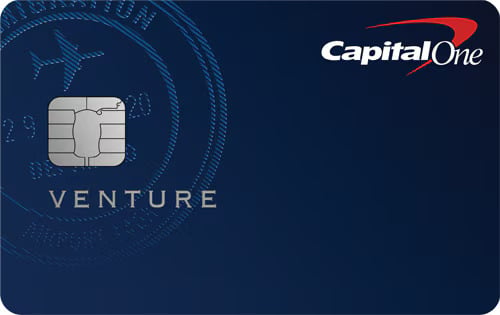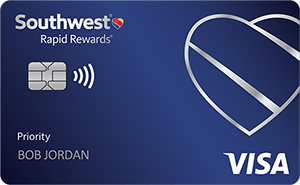What Is a Co-Branded Credit Card?
A co-branded card represents a partnership between a specific business and card issuer and is meant to encourage and reward brand loyalty.

Many or all of the products on this page are from partners who compensate us when you click to or take an action on their website, but this does not influence our evaluations or ratings. Our opinions are our own.
My father kept credit cards from seemingly every gas company in the glove compartment of our family car. The bottom of my mother’s purse was lined with cards from JCPenney, Belk and Sears. I didn’t know then that these cards belonged to a subset of credit cards known as co-brands.
A co-branded card might live in your wallet right now. Some examples of popular co-brands include the Costco Anywhere Visa® Card by Citi, the Marriott Bonvoy Boundless® Credit Card and the Disney® Visa® Card.
So, what are these credit cards that bear the names of some of the most recognizable businesses in the world? Here’s what you need to know about co-branded cards.
» MORE: Best store cards
Terms and conditions apply. Credit products subject to lender approval.

Definition of a co-branded credit card
A co-branded card is a card that’s affiliated with a specific merchant or company as well as a credit card issuer. Logos of the company and the issuer — say, Walmart and Capital One — will appear on the credit card, signaling that it’s co-branded. Businesses that have their own co-branded credit cards include airlines, hotels, gas companies and clothing stores.
Co-branded cards are meant to benefit the consumer and company. They typically offer rewards on purchases made with that particular business, incentivizing cardholders to be loyal customers.
Some co-branded cards are closed-loop, meaning they can only be used at the merchant associated with the card. For example, the Victoria's Secret credit card is only good for purchases at Victoria’s Secret and its affiliated brands. Other co-brands such as the World of Hyatt Credit Card are open-loop and thus may be used anywhere the card’s payment network is accepted. And sometimes, a brand will offer both an open-loop and closed-loop version of their credit card.
What are the benefits of a co-branded credit card?
Businesses want you to apply for their co-branded credit card, so these cards often have perks that you can’t get in regular credit cards.
Elevated reward rates. High rewards rates on brand purchases are a common feature of these cards. For example, it’s possible to earn up to 80 points per $1 spent at American Eagle with the American Eagle credit card; the Apple Card earns 3% back on Apple products.
Special perks. Co-branded cards can offer some especially valuable perks. For example, using a hotel credit card could earn you a free night's stay, and using an airline credit card could earn you a companion pass, discounts and elevated status within the brand’s loyalty program.
Accessibility. Co-branded cards can be easier to qualify for than a regular credit card. You may be able to apply for a store card right at checkout and immediately use the card to pay for the purchase. By contrast, many general rewards cards require at least good credit, or a minimum credit score of 690.
What are the downsides of co-branded credit cards?
Co-branded credit cards have their share of drawbacks that should be weighed against their benefits. Among them:
Limited use. Some co-branded credit cards are closed-loop, meaning their use is restricted to one specific merchant.
Inflexible redemption options. Often, rewards earned with a co-branded card may only be redeemed for credits toward spending at that particular business. In the case of co-branded travel cards, cardholders are locked into redemptions at a single hotel chain or airline. A general travel card such as the Capital One Venture Rewards Credit Card earns the issuers’ proprietary currency that can be transferred to several travel partners, opening up more redemption possibilities.
Short redemption window. Some co-branded cards earn rewards that expire rather quickly. Rewards earned with the Michaels Credit Card are converted into $5 vouchers that expire after just 32 days. Regular credit cards, on the other hand, often earn rewards that never expire.
Low rewards for general spending. Co-branded cards want you to spend more at their brands, not everywhere else. Reward rates on spending outside of the brand are typically a paltry 1%, often making co-branded cards poor top-of-the-wallet candidates.
Low-value rewards. Sure, co-branded cards sometimes have attractive rewards rates that allow you to quickly rack up points, but they may have terrible cash value. Rewards on the best credit cards are worth 1 cent or more; some co-brands earn rewards worth a mere half a penny.
High APR. A higher-than-average purchase APR is common among co-branded cards, and especially those with lower credit score requirements. The average interest rate on credit cards in the second quarter of 2023 was 20.68%. For comparison’s sake, the APR on the co-branded Nordstrom Credit Card was 31.15% as of August 2023.
Should you get a co-branded credit card?
Some credit cards are good; others are objectively bad. The same holds true for co-branded cards. If it’s one of the better ones, and it jibes with your spending preferences, then adding it to your wallet could produce real value.
Getting a co-branded credit card can certainly be the right move if you’re a frequent customer of a particular business. Families that can’t go a full week without placing an Amazon order will likely benefit from the Prime Visa and its 5% cash-back rate on Amazon.com. However, getting a co-branded store card just for the one-time discount may not make sense in the long run.
Most co-branded cards probably won’t be best for everyday purchases, but they can nicely supplement a general rewards card. Say you live near a Southwest hub, so you have the Southwest Rapid Rewards® Priority Credit Card for booking flights on the airline, getting 4 points per dollar every time. But you shelve that card in favor of the Blue Cash Everyday® Card from American Express to get 3% cash back at U.S. supermarkets, on U.S. online retail purchases and at U.S. gas stations (on up to $6,000 a year in spending in each category, then 1%).
Before applying for a co-branded credit card, consider your spending habits and brand loyalties — and try to avoid the bad ones that are lurking at the nearest checkout counter.
Find the right credit card for you.
Whether you want to pay less interest or earn more rewards, the right card's out there. Just answer a few questions and we'll narrow the search for you.








